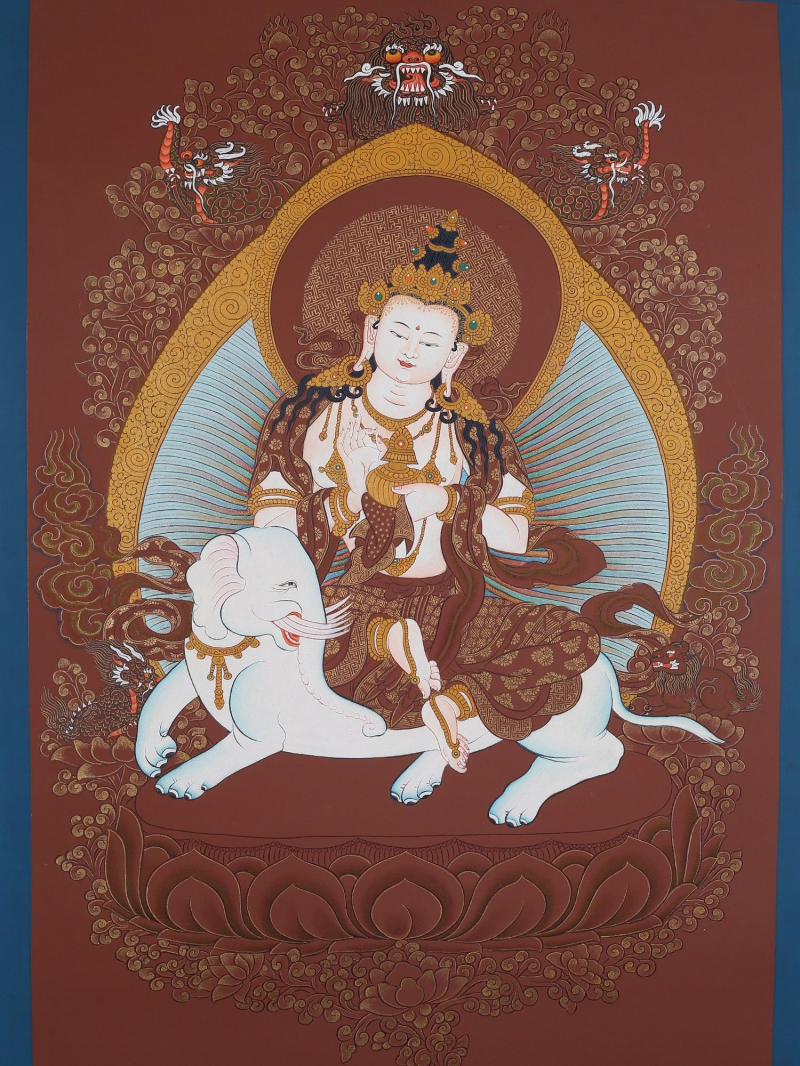Samantabhadra

Samantabhadra (lit. "Universal Worthy", "All Good") is a great bodhisattva in Buddhism associated with practice and meditation. In Mahayana Buddhism, he is part of the Shakyamuni Triad, which also includes Shakyamuni Buddha and the bodhisattva Majur. He is the patron of the Lotus Sutra and, according to the Avatamsaka Sutra, made the ten great vows that form the foundation of a bodhisattva.
Samantabhadra is not constrained by time, space, or physical conditions. Samantabhadra is not a colored being with two eyes, etc. Samantabhadra is the unity of awareness and emptiness, the unity of appearances and emptiness, the nature of mind, natural clarity with unending compassion - that is Samantabhadra from the beginning.
In Japan, this bodhisattva is known as Fugen and is highly revered in Tendai and Shingon Buddhism. In Chinese Buddhism, Samantabhadra is known as Pxián and is associated with action, whereas Majur is associated with praj (transcendent wisdom). Unlike his more popular counterpart Majur, Samantabhadra is rarely depicted alone and is usually found in a trinity on the right side of Shakyamuni, mounted on a white elephant. Some believe that Samantabhadra's white elephant mount was the same elephant that appeared to the Buddha's mother, Queen Maya, to herald his birth.
Samantabhadra is also the name of the Adi-Buddha, who is frequently depicted in indivisible union (yab-yum) with his consort, Samantabhadra, in the Nyingma school of Tibetan Buddhism. He is one of the Eight Herukas of the Nyingma Mahayoga and is known as Vajramrtra in wrathful form, but this Samantabhadra buddha and Samantabhadra bodhisattva are not the same.










